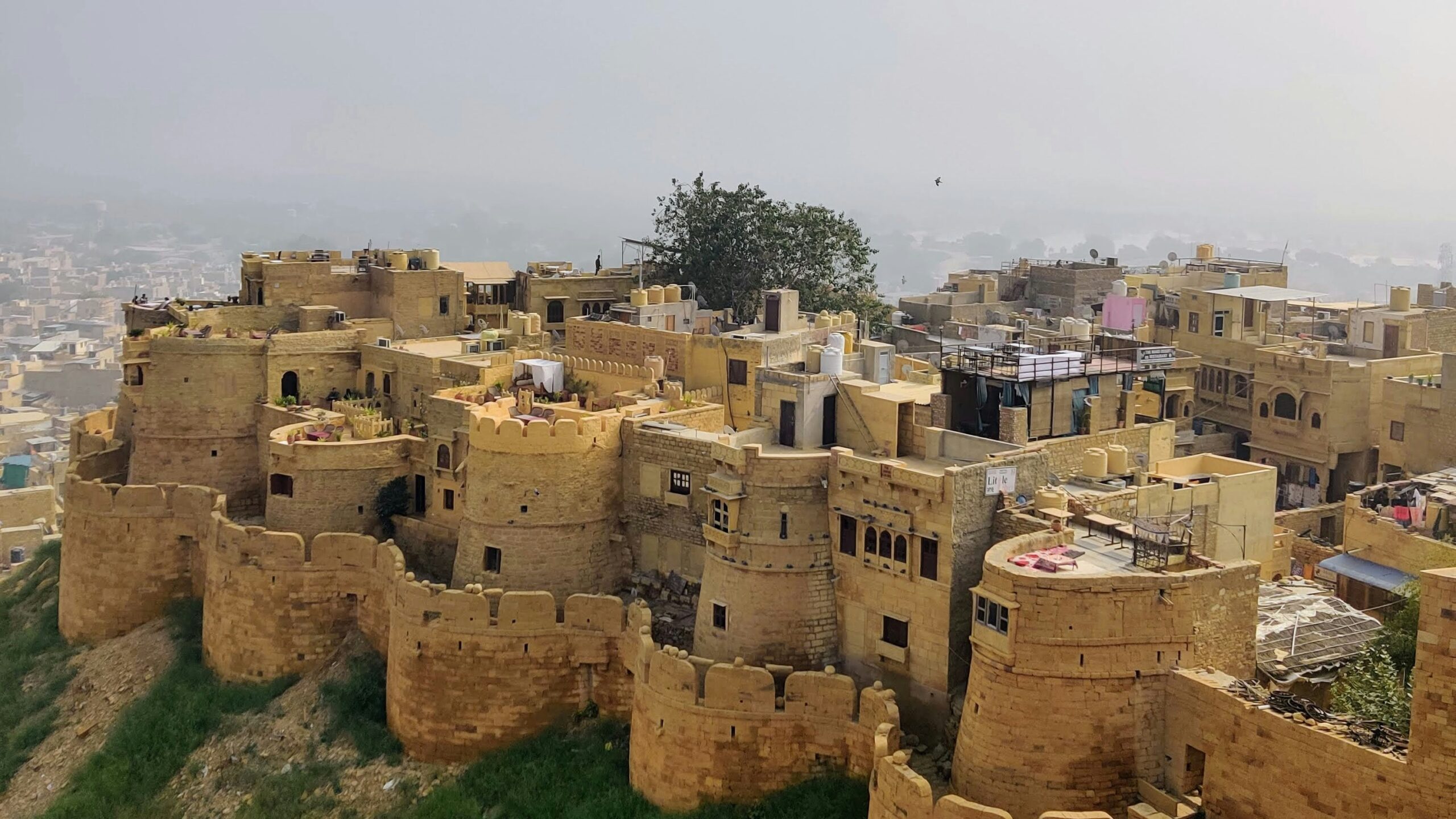
Jaisalmer Fort: The Golden Jewel of Rajasthan
Standing tall amidst the golden sands of the Thar Desert, Jaisalmer Fort, also known as Sonar Quila, is one of the largest living forts in the world. Built in 1156 AD by Rawal Jaisal, the fort is a UNESCO World Heritage Site and a timeless symbol of Rajasthan’s rich history and architectural brilliance.
Why Visit Jaisalmer Fort?
✔ A Living Fort – Unlike most forts, Jaisalmer Fort is inhabited by thousands of people, with houses, temples, restaurants, and markets inside.
✔ Breathtaking Views – Witness panoramic views of Jaisalmer city and the Thar Desert from the fort’s ramparts.
✔ Majestic Rajput Architecture – Explore intricately carved havelis, grand courtyards, and impressive gateways.
✔ Historical & Cultural Hub – Home to Rajput & Mughal-era palaces, museums, and Jain temples.
✔ Shopping & Local Experience – Buy handmade textiles, jewelry, and souvenirs from the fort’s bustling bazaars.
Historical Overview
Origins and Significance
Jaisalmer Fort was founded in 1156 AD by Rao Jaisal, a Rajput ruler of the Bhatti clan. The fort was strategically constructed to control the important trade routes that passed through the Thar Desert. Its strategic location made it a significant fortress during medieval times, serving both as a military stronghold and a royal residence.
The fort has played a crucial role in regional history, withstanding numerous sieges and battles over the centuries. Its historical importance is highlighted by its role in trade, defense, and regional politics.
Architectural Brilliance
Jaisalmer Fort is renowned for its stunning architecture and unique features:
- Golden Sandstone: The fort’s honey-colored sandstone gives it a distinctive golden hue, blending seamlessly with the desert landscape. The sandstone also has a reflective quality, causing the fort to glow warmly under the sun.
- Massive Walls and Bastions: The fort is surrounded by imposing walls and bastions that rise up to 30 meters high. The fortification is designed to withstand attacks and provide a formidable defense.
- Intricate Carvings: The fort’s architecture is adorned with exquisite carvings and jharokhas (overhanging balconies). The intricate designs showcase the artistry of the time and add to the fort’s grandeur.
- Palaces and Temples: Within the fort, visitors can explore a range of palaces, temples, and havelis. Notable structures include the Raj Mahal (Royal Palace), the Jain Temples, and various beautifully decorated havelis.
Exploring Jaisalmer Fort
A visit to Jaisalmer Fort offers a rich experience of history, culture, and architectural beauty:
- The Entrance: Start your exploration at the fort’s grand entrance, known as the Hawa Pol (Wind Gate). The entrance is adorned with intricate carvings and serves as a gateway to the fort’s historic interiors.
- The Raj Mahal: Visit the Raj Mahal, the royal palace within the fort. The palace features elaborate courtyards, halls, and apartments, reflecting the opulence of the ruling family.
- Jain Temples: Explore the Jain Temples within the fort complex. These temples are renowned for their stunning marble work and intricate carvings, offering insights into Jain architecture and spirituality.
- Havelis: Wander through the narrow lanes of the fort to discover several havelis (traditional mansions) with ornate facades and detailed carvings. The Patwon Ki Haveli and Salim Singh Ki Haveli are particularly notable.
- Fort Views: Climb to the fort’s ramparts to enjoy panoramic views of the Thar Desert and the city of Jaisalmer. The views from the fort provide a stunning contrast to the golden architecture.
Practical Tips for Visitors
- Best Time to Visit: The ideal time to visit Jaisalmer Fort is between October and March when the weather is cooler and more comfortable for exploring.
- Getting There: Jaisalmer is accessible by road, rail, and air. The nearest airport is in Jaisalmer, with regular flights from major cities like Delhi and Jaipur. The fort is within walking distance from the city center.
- Dress Code: Wear comfortable clothing and sturdy footwear suitable for walking and climbing. Given the desert environment, it’s also advisable to bring sun protection and stay hydrated.
- Guided Tours: Consider hiring a local guide to enhance your visit. A guide can provide historical context, interesting anecdotes, and detailed information about the fort’s architecture and significance.
Final Thoughts – Why Jaisalmer Fort is a Must-Visit?
Jaisalmer Fort stands as a breathtaking example of Rajasthan’s rich architectural and cultural heritage. Its golden sandstone facade, intricate carvings, and strategic location make it a must-visit destination for anyone interested in India’s royal past. Whether you’re exploring its grand palaces, wandering through its bustling markets, or marveling at the panoramic desert views, Jaisalmer Fort promises an unforgettable experience.
Embark on your journey to Jaisalmer Fort and immerse yourself in the splendor and history of one of India’s most magnificent forts. Discover the allure of the Golden Fort and experience the magic of Rajasthan’s desert kingdom.
Jaisalmer Fort, the “Golden Fort” of India, is a mesmerizing blend of history, culture, architecture, and local life. Whether you’re a history buff, traveler, filmmaker, or photographer, this UNESCO-listed living fort promises an unforgettable experience in Rajasthan’s golden city.
